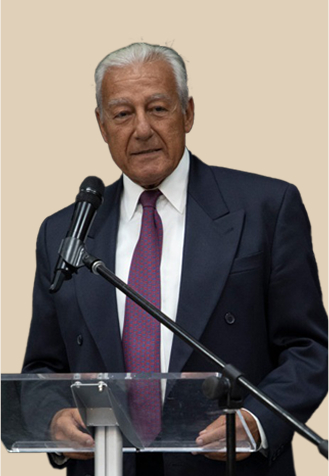ADC in AP: Star and Crescent Join Christmas Tree
By JIM FITZGERALD — Dec. 14, 2008
Copyright © 2008 The Associated Press. All rights reserved.
ARMONK, N.Y. (AP) – When they light the town Christmas tree in Armonk on Sunday, there will be a Jewish menorah right alongside, as usual. There will also be something new this year – an Islamic crescent and star.
And if there are any Buddhists or Hindus in town who want to see their symbols, the town is welcoming applications.
The holiday display, sponsored by the town of North Castle, which includes the village of Armonk, is among a growing number around the country that include the symbol for Islam.
“We’ve decided to go in the direction of being all-inclusive,” said Reese Berman, supervisor of the town of 11,000, about 30 miles north of New York City and the site of IBM headquarters.
The star and crescent have been part of the national Christmas tree display in Washington for more than a decade. The symbol also is part of the display in Mineola on Long Island, which also features a Christmas tree, a menorah, a Nativity scene and a Kinara candleholder for Kwanzaa. And Wellesley, Mass., has had a star and crescent alongside its Christmas tree and menorah for several years.
Armonk’s display is centered on a gazebo in a towering pine grove. One tree about 11 feet tall, strung with white lights, has been placed inside. A silver menorah is a few steps to the right of the cobblestone walk leading to the gazebo. The bright-white crescent and star are on 6-foot-high stanchions to the left.
Craig Mason, 63, a retired town resident who was walking past the display on a rainy morning last week, said he had no strong religious feelings but felt the display “says nice things about the people here, about how we welcome everyone.”
He found the star and crescent symbol “very attractive in its simplicity.”
Judy Wesley, director of the Armonk Chamber of Commerce, said she was raised Catholic and “in my opinion there’s nothing wrong with having a spirit of inclusion. Jesus Christ himself would have gathered everyone around him.”
However, Bill Donahue, president of the Catholic League for Civil and Religious Rights, said displaying a menorah and star-and-crescent – which he considers religious symbols – “shows tremendous sympathy for Jews and Muslims at the expense of the majority Christians” because he does not believe a Christmas tree is religious. He would favor adding a Nativity scene.
Christmas-season displays on public property have been controversial in recent years as courts have tried to balance free speech with church-state separation and wrestle with the issue of what is a religious symbol and what is secular.
Two years ago, nearby Briarcliff Manor canceled its tree-and-menorah display rather than add a Nativity scene a resident wanted to donate. Last year it put up a 6-foot-tall model of a dreidel, a spinning toy with Hebrew letters, trying to keep things secular.
North Castle added its menorah about 15 years ago at the behest of a local temple, which felt Hanukkah should be recognized along with Christmas.
Last year, the town board was approached by Asad Jilani, who thought his family and other Muslim residents should also be represented.
“I said `Oh, there’s a menorah and a Christmas tree and where is my crescent?'” said Jilani. He said that although there is not always an Islamic holiday in December, he felt it would be an appropriate time to celebrate all cultures.
What he didn’t want, he said, is what the town did last year – move the menorah from the park onto the grounds of the temple. Berman says the town felt it did not have time to address Jilani’s request and moving the menorah “would mean the star and crescent was not singled out.”
Jilani was embarrassed. “The last thing I was suggesting was to move the menorah,” he said. “I wanted this to be for openness, for representing everyone.”
This year, Berman appointed a committee that studied what other municipalities had done and what the courts had decided.
“It might have been easier to just do away with the Christmas tree and everything else but it would be too much of an assault on what we’re used to at Christmas,” said Berman, who’s Jewish.
The board approved the star and crescent and came up with guidelines for future requests: There has to be a formal application, the symbol will be displayed only during the Christmas season, it has to be privately funded and the board will not try to distinguish between religious and secular symbols.
Jilani, who works in information technology in Manhattan, said he believes the town was “magnificent” and true to the spirit of openness he says he has always felt there. He feels it was important that the request came from a resident rather than an outsider.
Laila Al-Qatami, spokeswoman for the American-Arab Anti-Discrimination Committee in Washington, said: “Arab-Americans and Muslim Americans are Americans and respect other religions. They know that Christmas is a big holiday and they’re glad to be included.”
Recent Posts
Action Alerts

Your support means everything. Your gift protects rights, builds community, and fights hate. Let’s move forward together.
